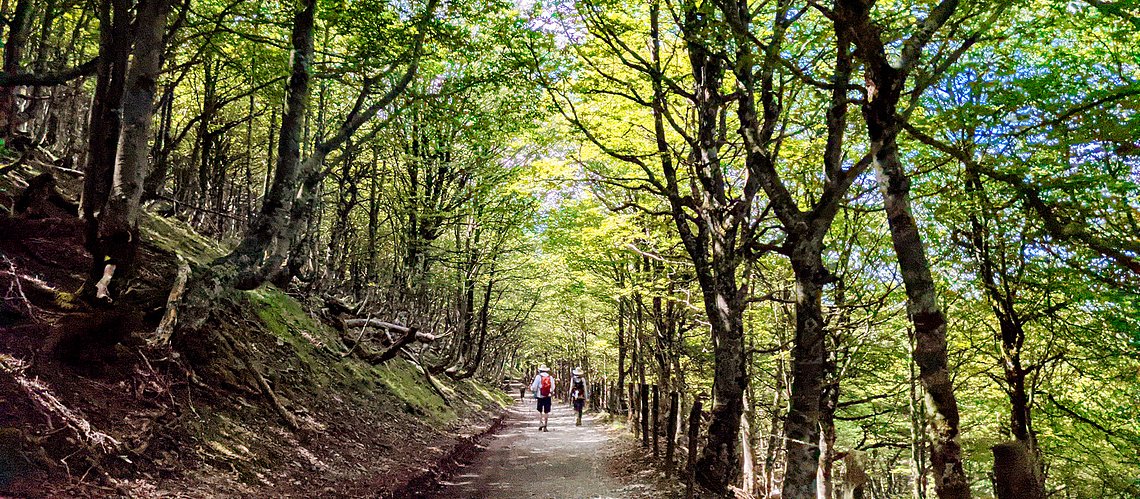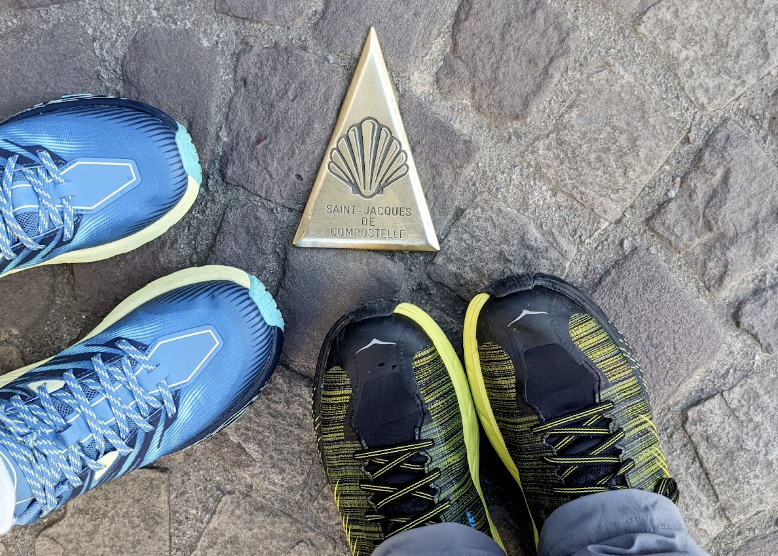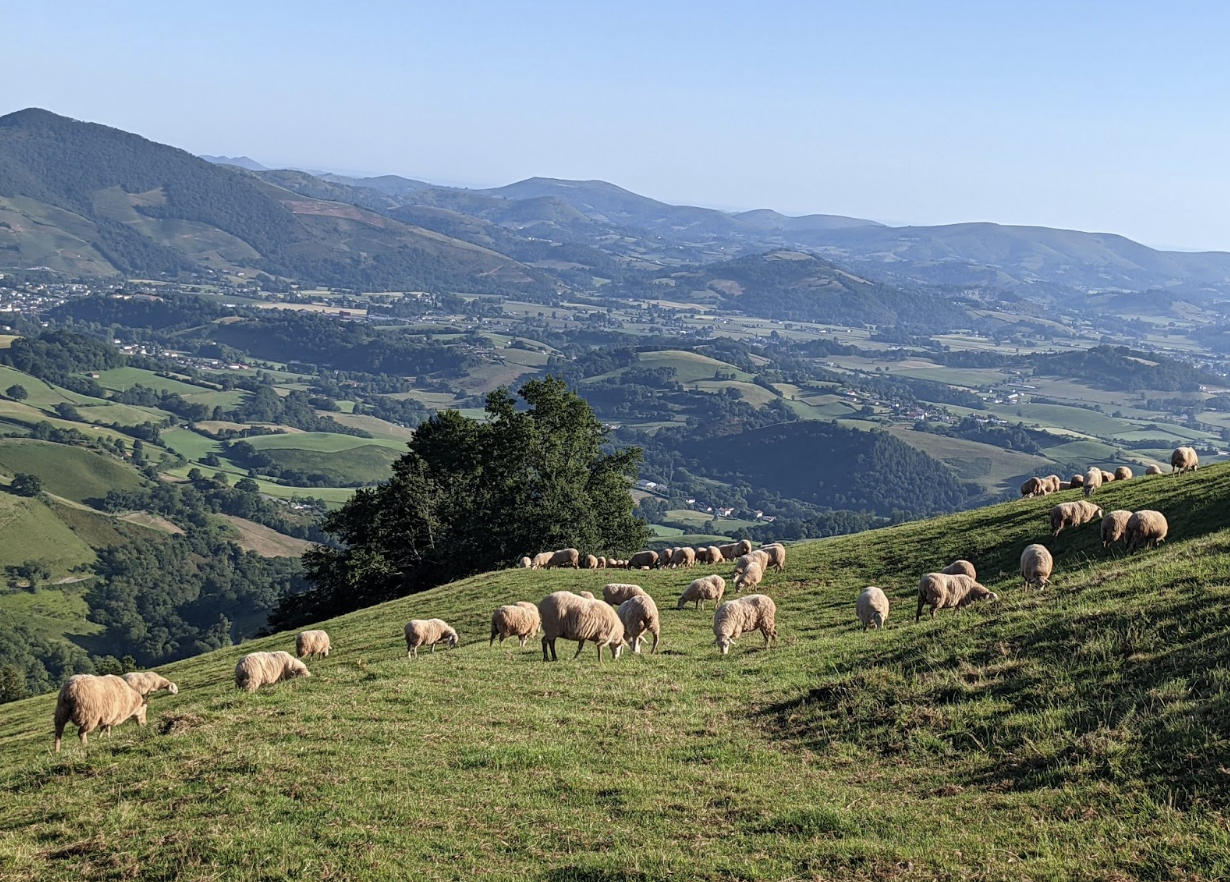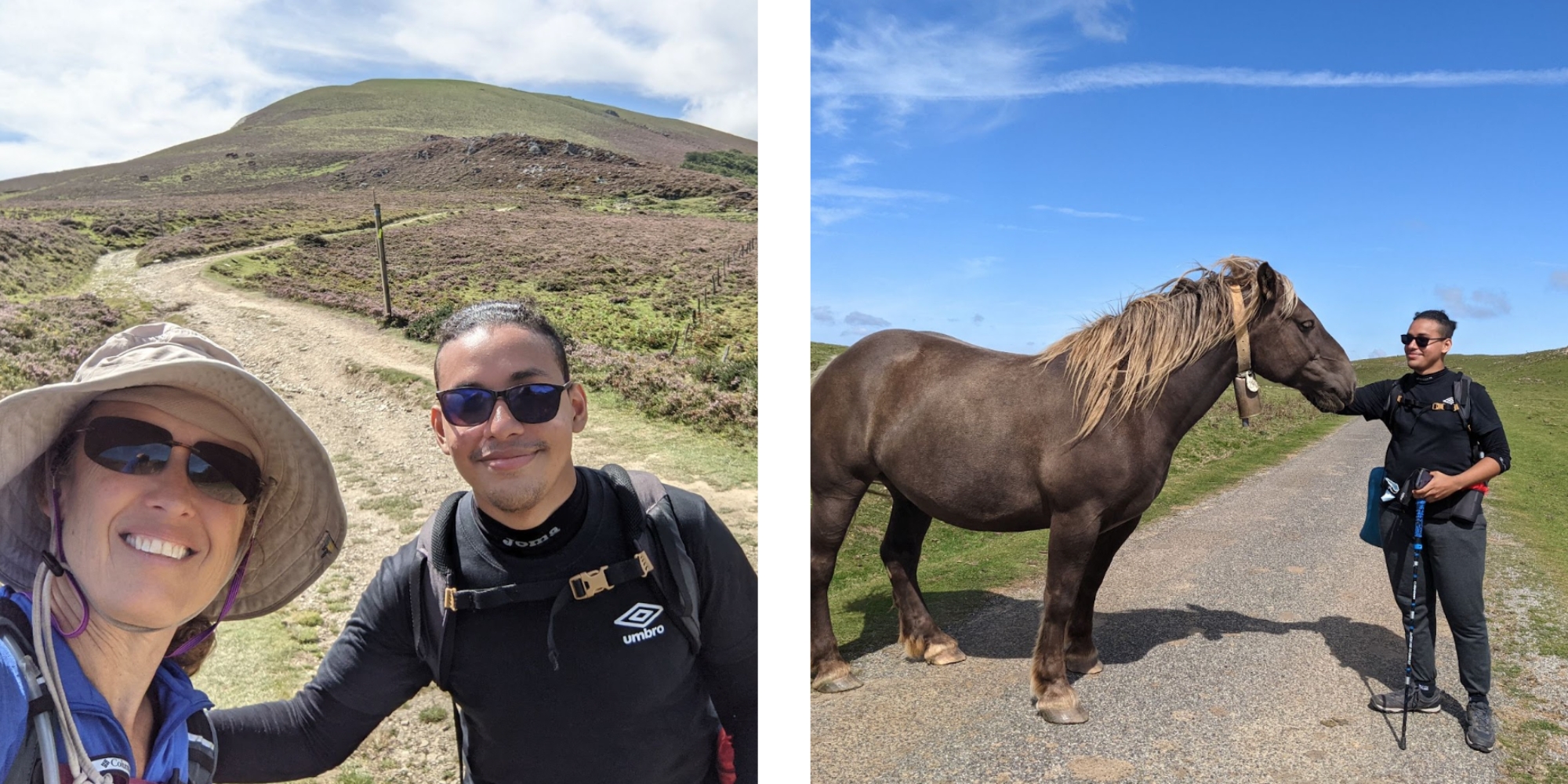First Day on the Camino
I wonder if the transformation I feel is also noticeable from the outside. I am not the same woman who left St-Jean that morning.

Posted on Tue 21 Feb 2023 · by Aileen Cheatham
It's early morning on August 29th. After months of planning, my friend Libby and I are finally taking our first steps on the Camino de Santiago, a world-renowned pilgrimage that hundreds of thousands of pilgrims have walked before.
We have both left our families behind to embark on this 5-week long adventure.
Though I’ve planned and trained for the last three months, I don’t know what to expect, and I feel both excited and uneasy. But for now, walking on the cobblestones of the medieval village of St-Jean-Pied-de-Port - the starting point of the French Way - is all we have to do.
We follow the iconic sea-shell markers and yellow arrows that, for centuries, have marked the path of this famous pilgrimage. Our goal on this first day is to cross the Pyrenees from Spain to France, which is said to be the most challenging segment of our journey.

Past the village walls, we cross the river Nive and begin the mountainous ascent. Soon St-Jean disappears behind a thick haze. As we gain altitude, an expanse emerges on both sides. Though I’ve read about it and seen pictures, the beauty of these rolling hills takes my breath away. It’s idyllic; white sheep grazing to the left, ancient rounded mountains as far as I can see on the right.
Wanting to capture this beauty, we stop, and I take some pictures, but they are disappointing. There is no substitute for the real thing! I catch myself wanting, more than anything, to share this experience with my husband and my four, now-grown, children. With all my being, I wish they were there walking with me and experiencing the sublime beauty of this trail.

The wish, and the sadness it brings, eclipses my ability to see. Images of happy moments with my children hijack my mind, and then I remember why they are not here. I imagine them in their lives, scattered around the world, doing the things that young adults do; living lives that I am not a part of. I feel alone.
I close my eyes for a minute and I breathe in the devastation. The truth that I’ve been ignoring since my last child finished college, is that I haven’t totally dealt with my empty nest, and I know that it’s time. It’s time for me to find myself again; to learn how to be, on the other side of my identity as “mother.” I feel a small release as a tacit intention is set.
The path has become steeper, and I’m having trouble keeping pace. It is clear that Libby is a much faster walker than I am, so I invite her to walk ahead at her own pace. She is hesitant to leave me, but I encourage her. Soon she is a dot on the horizon.
I walk slowly concentrating on putting one foot in front of the other. I breathe the clean, fresh air and I’m present again in this mountainous piece of heaven.
A young man, another pilgrim, catches up to me. Conversation begins naturally and easily. We speak Spanish, my native language. He’s from Panama, living and working in Spain as a software engineer. It turns out he’s the same age as my eldest son, who, coincidentally, is also a software engineer.
As we speak, I catch myself treasuring his words and his confidences as if he were my son. He asks me why I am walking the Camino. The question surprises me. Later, farther along the Way, I will discover that this is the most common question on the Camino and I will recognize two dozen different reasons why I’m on the Camino - the answer changing depending on the day. But that first time, I ponder the question and say something about looking forward to a break from routine and work; a chance to see Spain in this unique way.
The answer doesn’t sound true to me though. Saying I didn’t know would have been more honest. Back in April I had seen a friend's Facebook pictures of their Camino and felt a calling. Three hours later, having looked at flights, dates, and the best route - I just knew that I HAD to do it.
This young man, like most people who embark on this journey, knows exactly why he is there. He is at a crossroads; he is here to find answers. He is in a double conundrum, he says; having two big decisions to make; one about his career and the other one....about a girl, he admits, blushing a little.
Before I can think, I tell him that I facilitate this thing called “The Work,” and I think it could help, if he is willing. I briefly explain that it’s a way to identify and question stressful thoughts. His face lights up. He wants to try it, he says.
And so, as we walk up the steep, rugged path, we do The Work of Byron Katie. He tells me about the first issue. He believes he needs to know what to do in his career. He has been let go, and he doesn’t know what to do; stay in Spain and look for a new job there, or go back to Panama with his family. He is losing sleep over this, and his anxiety does not allow him to think straight.
“You need to know what to do, Is it true?” I ask. And then, “Can you absolutely know it’s true?” We explore questions 3 and 4 of The Work of Byron Katie, ”How do you react, what happens when you believe the thought?” and “Who would you be without the thought?”
To finish, we turn the thought around and find examples of how the opposite statement - “I don’t need to know what to do” - could also be true. The Work comes very easily to him and he looks as if a weight has been lifted off his shoulders. His eyes are bright with excitement.
We tackle the second issue: About the girl. He tells me the situation as a story and in it, I find the underlying thought that I think is stressing him out. I ask him: “She is the one,” is it true?
By the time we’ve finished working the thought, he is laughing out loud, something which I often witness with my clients. He can’t believe that it was so simple. He has relaxed and there is a lightness about him that was not there before.

We notice a couple of horses running wild on the side of the hill. We get still and call them, and they come to greet us. It feels magical. We laugh. We take pictures. And we keep walking.
When we get to the top of the hill, he asks if we can rest. We sit by the side of the path and eat our snacks; I have an apple, and he has a cereal bar.
Meanwhile, other pilgrims pass us by. Twenty minutes later, we part. I am now the one walking faster (the couple of months of training are really paying off). He says he needs to slow down. I offer him a walking pole to make his descent a little easier. Though he hesitates to take it, the mother in me insists, and soon I am a dot on his horizon.
Still walking down the mountain, I join a middle-aged Spanish woman who tells me she gives herself a week on the Camino each year. Later I catch up to two French University students who are very eager to practice their broken English with me.
Meanwhile, the landscape keeps changing. We walk on a rocky path; cross a stream, and a forest. Beyond the forest, a distant view of our destination; the village of Roncesvalles with its famous church and monastery.
No one asks me again what I do, or why I’m there - nobody has a conundrum to see through. Listener is my new role.
A new awareness begins to dawn in me: I see that the identities that I use to define myself—mother, daughter, wife—do not really define me. It’s clear that they come and go just as the evolving landscape and the people who cross my path.
And I see how clinging to them causes so much pain. At this moment, walking through this forest, Pilgrim is just as fulfilling a role as Facilitator, or even... Mother.
I finish the day’s walk alone, but I don’t feel alone anymore. Memories of my children keep coming and going, but they no longer make me sad. I feel clear, and each step is filled with its own purpose. I’m at home with myself.
I enter the town of Roncesvalles through a narrow passage that leads to a courtyard. I’m healthily tired, but energized by the day’s experience. Sitting on a stone wall across from the monastery, I watch arriving pilgrims walk through into the courtyard and straight to a queue of people waiting to check in to their accommodations for the night.
I may have been there 15 minutes or an hour, I don’t know; I’m in a state of no time.
A pilgrim walking into the courtyard waves hello with a pole. I recognize my Panamanian friend. He looks very tired, but he is smiling ear to ear. He walks up to me, excitedly tells me about the rest of his walk, and returns my pole. He thanks me profusely for it; he couldn’t have done it without it, he says.
Saying goodbye, he walks to the queue; he wants to make sure there will be space for him. As he walks away, I silently thank him.
For a moment I had thought I was the one who helped him, but I now see that the opposite is truer. Later on, after many days of walking, I will realize that, somehow, the Camino has a way of offering pilgrims exactly what they need.
I find Libby at a café on the other side of town sitting with three pilgrims; a 19 year old young girl, a man in his 40’s, both from Denmark, and a 27 year-old young woman from Belgium. She invites me to join, and I do. We order iced-tea and potato chips and celebrate our day.
Libby looks radiant. There is a brightness in her blue eyes I haven’t seen before. She has also found new friends.
I wonder if the transformation I feel is noticeable from the outside. I am not the same woman who left St-Jean that morning. A little weight - a little identity - has shed off my shoulders. I feel lighter, freer, more present. There is a friendly Universe out there, full of wonderful people waiting for me to connect.
Join Aileen with Honest Heart Journeys on the Camino in September, 2023. Find out more here!
